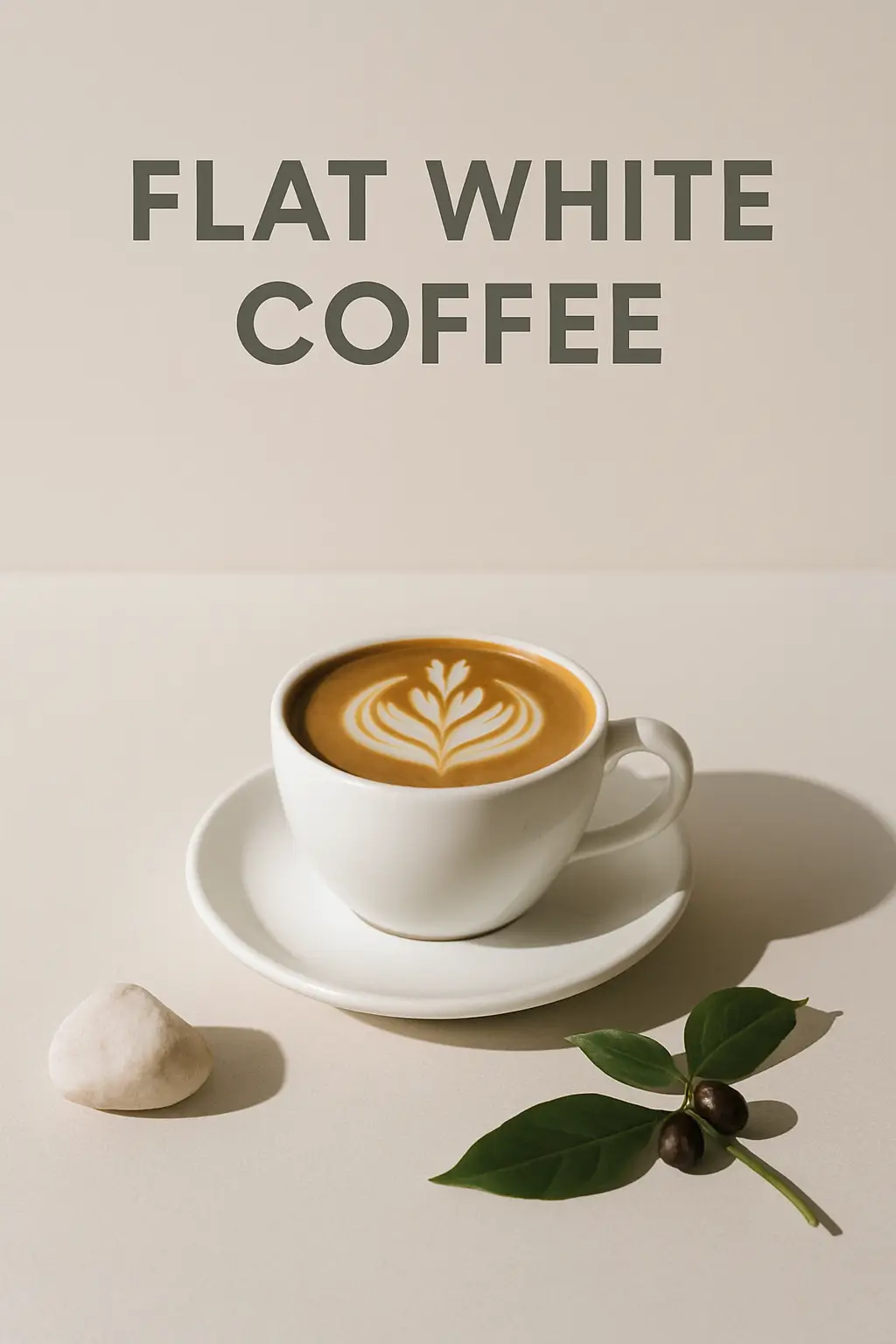You’ve probably noticed how popular espresso-based drinks are these days. From your morning latte to a quick shot of espresso, there’s a whole world of coffee out there, but have you ever really gotten to know the flat white coffee? It’s quickly become a favorite for many, and for good reason. Think of it as an espresso drink that truly stands out, thanks to its incredibly smooth, creamy texture and powerful coffee flavor. That’s all because of its unique milk-to-espresso ratio, which truly makes it special.
What defines a flat white coffee?
So, what makes a flat white so special? It really starts with its foundation: a double shot of espresso. This isn’t just any coffee; it’s what gives the drink that rich, full-bodied flavor you’ll immediately recognize. Some baristas even opt for a ristretto, a shorter, more concentrated espresso shot, to really dial up the intensity. If you like your coffee with a kick, you’re in for a treat.
The milk, though, plays just as important a role. When we talk about a flat white, we’re really talking about the unique quality of microfoam. This isn’t the fluffy foam you might see on other drinks. Instead, it’s finely textured, velvety steamed milk—so smooth it feels almost like liquid silk. You’ll notice it has just a thin layer of foam, usually around 5mm, which really sets it apart. This delicate texture creates an incredibly silky mouthfeel, giving you a smooth, glossy sip without any of that thick, airy froth. It’s what makes a flat white so memorable.
You’ll typically find a flat white served in a smaller cup than a latte, usually around 150–160 ml, or about 5 to 6 fluid ounces. While it’s certainly larger than a straight espresso shot, this specific size really helps maintain that higher espresso-to-milk ratio we discussed. What does that mean for you? A stronger, more pronounced coffee taste in every sip, which is exactly what a true flat white is all about.
So, what does a flat white actually taste like? Imagine a bold, aromatic coffee—that intense espresso presence is definitely there. But here’s the clever part: it’s perfectly balanced by the natural sweetness and smooth creaminess of the milk. You get this incredibly harmonious blend that feels both powerful and comforting. Each sip is rich, smooth, and less acidic or bitter than you might expect from such a strong coffee. It’s a truly satisfying experience, where the espresso’s character shines through, softened just enough by that beautiful microfoam.
How to make flat white coffee at home?
Flat white vs. latte vs. cappuccino: understanding the differences
When you’re standing at the coffee counter, the choices can feel a bit overwhelming, right? Flat white, latte, cappuccino—they all seem pretty similar at first glance. But trust me, there are some really distinct differences that make each one unique.
Here’s a quick breakdown:
| Feature | Flat White | Latte | Cappuccino |
|---|---|---|---|
| Milk Texture | Finely textured, velvety microfoam with minimal, silky foam (around 5mm). | Microfoam, but usually with a slightly larger, creamier layer of foam. | Thick, airy, and distinctly frothy foam layer on top. |
| Cup Size / Milk Volume | Smaller cup (5–6 oz), less milk overall, letting espresso shine. | Larger cup (8–10 oz), much more milk, creating a milder, creamier drink. | Medium cup (5–8 oz), similar volume to a latte, but much of it is airy foam. |
| Espresso-to-Milk Ratio | Higher ratio (around 1:3), stronger, more pronounced espresso flavor. | Lower ratio (usually 1:4 or 1:5), espresso mellowed by extra milk, milder taste. | Aims for a balanced 1:1:1 ratio—equal parts espresso, steamed milk, and foam. |
Essentially, the flat white cleverly finds a middle ground, dialing back the foam and milk volume to really let the espresso shine, sitting perfectly between a creamy latte and a frothy cappuccino.
The origins of the flat white: a tale of two countries
Now, where did this fantastic drink actually come from? That’s a bit of a fun debate, as both Australia and New Zealand lay claim to its invention back in the 1980s. It’s definitely a tale of two countries, deeply tied to the coffee scene in the Southern Hemisphere.
In Australia, many credit Sydney as the birthplace of the flat white in 1985. The story goes that barista Alan Preston popularized the term, using it to describe a coffee made with espresso and just lightly steamed milk—the crucial part being *no thick foam*, which really set it apart from the frothy cappuccino everyone was used to. Interestingly, there’s even some evidence the name “flat white coffee” popped up in Sydney as early as 1983, suggesting the concept was already brewing.
Meanwhile, in New Zealand, you’ll hear a couple of strong contenders for the flat white’s origin. One popular tale comes from Wellington in 1989, where a barista supposedly served a “failed cappuccino” that didn’t develop its usual froth. Rather than tossing it, they simply called it a “flat white.” Another theory points to Auckland in the 1980s, where baristas were actively looking for a less milky alternative to the traditional Italian latte. Perhaps they even picked up the term from those Sydney cafés. Regardless, both countries clearly had a hand in shaping this iconic drink.
For a while, the flat white remained a cherished regional specialty, mostly enjoyed within Australia and New Zealand. But then, around the mid-2000s, something shifted. It really took off globally, becoming a true staple in specialty coffee shops around the world. People everywhere started to appreciate its distinct appeal—that beautifully velvety microfoam milk texture and the pronounced espresso flavor that somehow manages to be both strong and incredibly smooth. It’s a testament to Australasian coffee culture, showing how a locally loved drink can become internationally adored.
Why choose a flat white?
So, with all these options out there, why might a flat white be the perfect coffee for you?
- If you truly love the taste of espresso and want to really experience its rich notes, the flat white is an excellent choice. It gives you that pronounced, bold coffee flavor without burying it under too much milk, which can sometimes happen with a latte. You get all the intensity you crave, softened just right by the velvety texture.
- Beyond its strength, the flat white offers an incredibly balanced and smooth experience. That harmonious blend of intense coffee and the creamy, velvety mouthfeel of the microfoam creates a deeply satisfying drink. It’s approachable enough for daily enjoyment, yet sophisticated enough to feel like a treat. It really hits that sweet spot between bold and smooth.
Conclusion
So, there you have it—the flat white coffee in all its glory. It’s a truly sophisticated drink, built on a strong double espresso, perfected with distinct, velvety microfoam, and served in just the right size to let that rich flavor shine. Whether it hails from Australia or New Zealand, its unique charm has certainly won over coffee lovers worldwide. If you haven’t tried one, I highly recommend picking one up at your local cafe, or better yet, try making it yourself at home!









